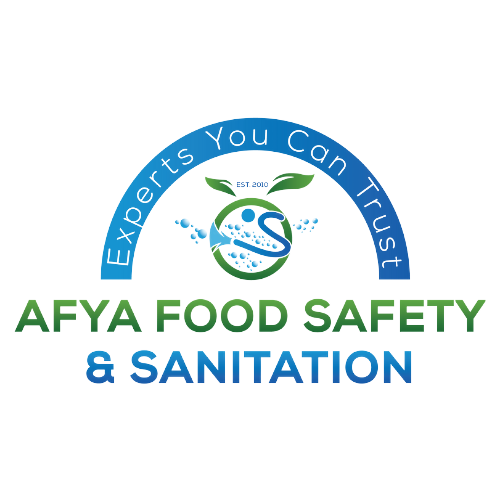
Please Wait For Loading

Please Wait For Loading
Maryland, MD USA
+1 (443) 666-9132
info@afyafoodsafety.com
Opening Hours: 9:00 AM - 5:00 PM
Copyright ©Afya Food Safety all rights reserved.
You can also reach us via Phone: +1 443 666 9132 or via Email:info@afyafoodsafety.com
Sanitation Plan: The Number 1 Tip for Success in Small-Scale Food Manufacturing
A crucial first step in maintaining the quality and safety of food items in small-scale food manufacturing is the creation of a thorough sanitation plan. The particular sanitation protocols and processes that must be followed to uphold high levels of cleanliness and hygiene are outlined in this plan, which acts as a road map for your company. Here is a detailed analysis of what makes up a sanitation plan:
Begin your sanitation journey with a thorough evaluation of your facility and the processes involved in food production. Then identify the potential sources of contamination, including raw materials, machinery, storage areas, and even employee habits. Pinpoint the Critical Control Points (CCPs) in your production process where stringent sanitary measures are most crucial. These are the pivotal stages where any contamination could significantly compromise the safety and quality of the final product.
For facilities handling allergenic ingredients, it is imperative to integrate robust allergen control measures into your sanitation plan. Develop and implement procedures designed to prevent cross-contamination. Clearly label allergenic ingredients and establish strict protocols for cleaning equipment and utensils to prevent allergen transfer. This proactive approach is essential to safeguarding consumers with allergies and maintaining the integrity of your products.
Within your sanitation plan, articulate precise techniques for cleaning and sanitizing every facet of your business, including equipment and workspaces. Provide detailed instructions on how to disassemble and clean equipment effectively. Include comprehensive cleaning schedules, ensuring they are realistic and seamlessly integrated into your production workflow. Specify the types of detergents, sanitizers, and cleaning agents that should be used, accompanied by instructions for their safe and efficient application.
The establishment of a comprehensive cleaning schedule is pivotal to ensuring sanitation consistency. This schedule delineates when and how frequently each area of your facility and equipment should be cleaned and sanitized. It is crucial to design a schedule that aligns with your production workflow, ensuring that it is both achievable and sustainable.
Encouraging employee involvement in sanitation-related issues according to the established plan can yield significant advantages for your business. It is crucial to consistently clarify their roles and expectations regarding their contributions to upholding the sanitation plan meticulously. Every team member should grasp the significance of maintaining a clean and safe working environment. As an employer, it is imperative to deliver comprehensive training to all employees, including recruits, regarding compliance with the sanitation procedures stipulated in the plan. Conducting periodic refresher training sessions is instrumental in keeping everyone well-informed about the most current and effective practices.
Maintaining meticulous records is a cornerstone of a successful sanitation plan. Document all sanitation activities comprehensively, including cleaning and sanitizing processes, employee training, and any incidents related to sanitation. These records serve dual purposes: ensuring compliance with regulatory requirements and providing a valuable resource for identifying trends or issues that may necessitate adjustments to your sanitation plan.
Implement a robust system for ongoing monitoring and verification of your sanitation plan’s effectiveness. Regularly inspect and test surfaces, equipment, and finished products for cleanliness and microbiological safety. Leverage data and feedback to drive continuous improvement, making necessary refinements to your plan to ensure its ongoing efficacy.
Stay vigilant and informed regarding local, state, and federal food safety regulations and standards that apply to your business. Your sanitation plan must align seamlessly with these requirements. Regularly update your plan to reflect any changes in regulations, ensuring your continued compliance.
In conclusion, the development of a well-structured sanitation plan is the cornerstone of a thriving small-scale food manufacturing operation. It not only serves as a prevention against contamination and safeguards product safety but also demonstrates your unwavering commitment to quality, both to discerning customers and vigilant regulatory authorities. As you embark on this journey, remember the importance of regularly reviewing and refining your plan to adapt to evolving challenges and maintain the highest standards of sanitation. Your dedication to sanitation excellence will undoubtedly be reflected in the impeccable quality of your food products.
Related Posts
Categories
The Crucial Role of Pest Control and Management
May 6, 2024Maintaining the Sweet Spot: Bakery Cleaning and Sanitation
April 15, 2024Calender